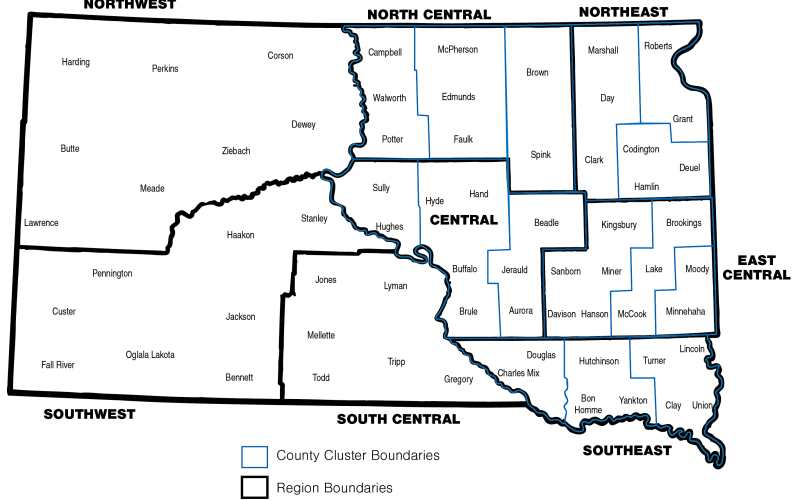Written collaboratively by Tong Wang and Sandeep Kumar.
Two-year corn-soybean rotation coupled with heavy chemical inputs has become the routine practice of agricultural production in the Midwestern United States. According to USDA/NASS data, corn and soybean prices received by producers in South Dakota both reached the peak levels of $7.39 and $16.00 per bushel, respectively, in August, 2012. Such unprecedented price has driven up the acreage planted for corn and soybean, at the expense of other crops and grassland.
Reduced profit from corn-soybean rotation
In most recent years, however, corn and soybean prices have been on a constant decline. Based on the World Agricultural Supply and Demand Estimates on February 9, 2017, the projected range for U.S. season-average corn price ranged from $3.20 to $3.60 per bushel, while the soybean price ranged from $9.10/Bu to $9.90/Bu. Despite the declining prices, corn and soybean production costs have been constantly increasing. Based on cash-rent farm enterprise analysis data for Minnesota, South Dakota and North Dakota (FINBIN), total corn production cost, which includes both the direct and overhead expenses, has risen from $385 to $535 per acre from 2010 to 2015, a 39% increase. Similarly, total soybean production cost increased from $321 to $456 per acre during the same period, a 42% increase.
The low corn and soybean market prices together with increasing production costs in recent years have squeezed much of the profit out of the traditional corn-soybean rotation. Low profits from corn and soybean production might open the door for producers to rotate a variety of crops including wheat and oat.
Importance of crop rotation on soil health
Crop rotational variety is important to provide insect, weed, and disease control, build soil health, and has many other benefits such as enhanced crop productivity, environmental and economic benefits. Planting rotations that involve cover crops can produce a large root system which holds the soil together by producing a new source of fresh organic matter after roots decay. This organic matter provides habitat suitable for earthworms which form tunnels in the soil for large soil pores, subsequently enhancing water infiltration. Organic matter also helps to form new soil aggregates, which is important because it holds the soil together and therefore prevents the risk of soil loss due to erosion during high intensity rainstorm events.
If the current soil structure is dense and compacted, crops such as alfalfa should be used in the regular crop rotation. The deep root system of alfalfa can go deeper into the ground even in the compacted soils. When these roots die, it leaves behind tunnels in the soil for future roots to grow into and further loosen the soil.
Funded project and future studies
Our recently funded NRCS Conservation Innovation Grant (CIG), titled “Demonstrating the Impacts of Crop Rotation on Soil Health and Farm Profitability in South Dakota”, aims to foster increased awareness among producers about crop rotation such as corn-soybean-wheat, corn-soybean-wheat-oats, corn-soybean-oats and cover crops and no-till systems on soil health and economic benefits.
A total of two farm sites located in South Dakota will be selected for assessing the impacts of crop rotation cropping systems compared to traditional corn-soybean rotation and also incorporation of cover crops on soil health, and crop yield. The 2-crop, 3-crop and 4-crop rotation system will be ranked in terms of total input cost and economic profit with and without subsidy. This 2-year project will demonstrate the impacts of agroecosystems (corn-soybean-wheat, corn-soybean-wheat-oats, corn-soybean-oats and cover crops and no-till systems) on soil health and economic benefits in South Dakota.


